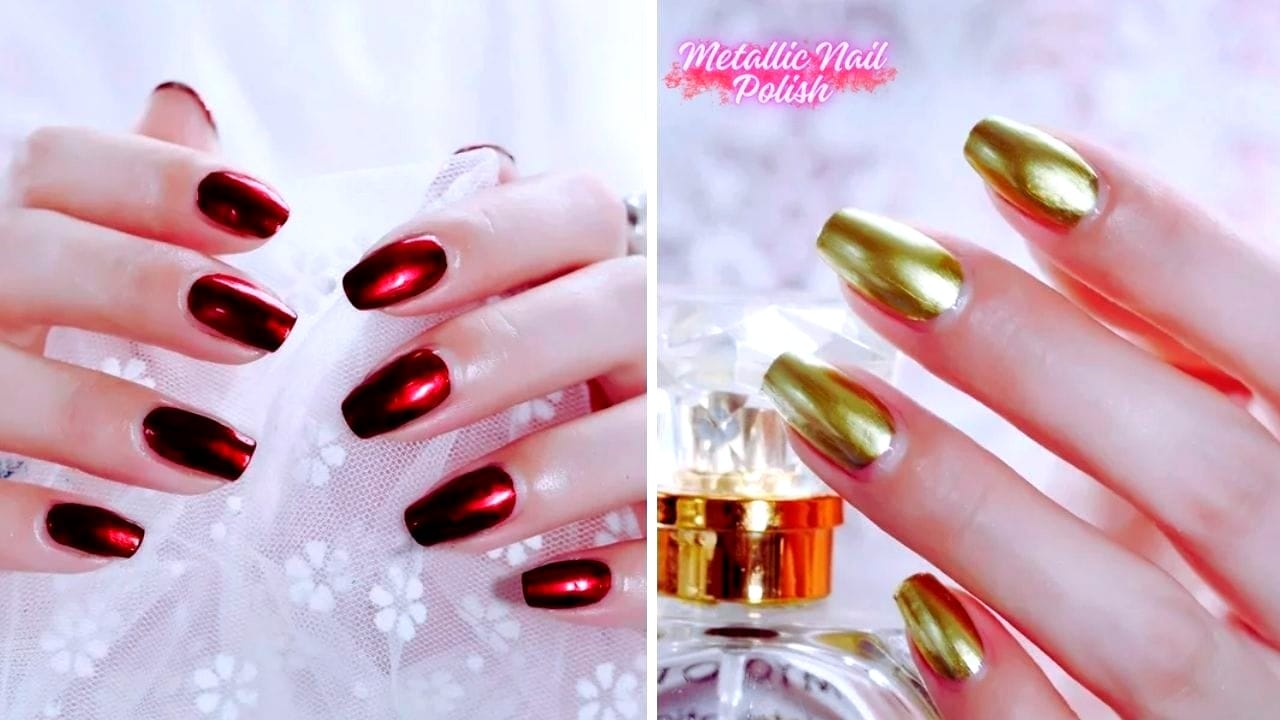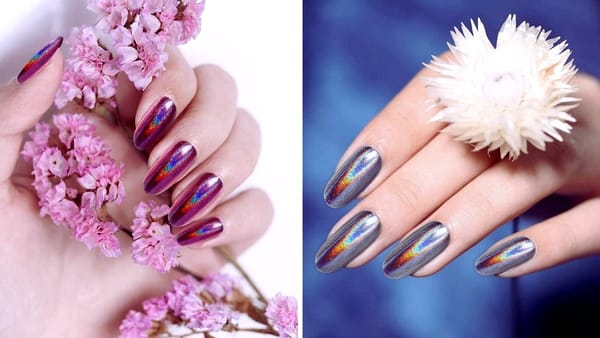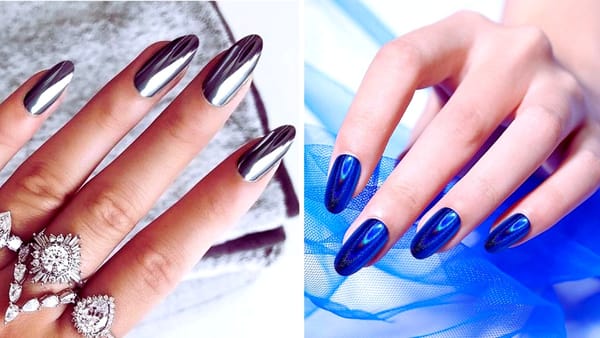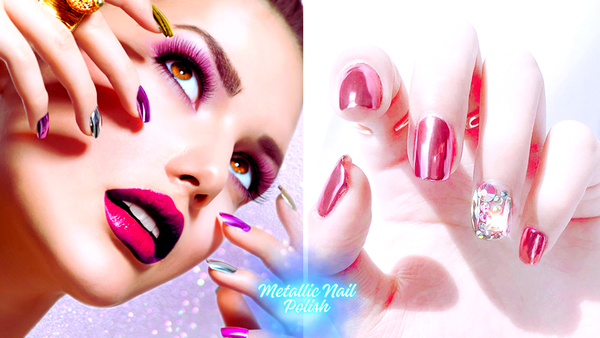Key Takeaways:
- Learn the most effective methods to remove metallic nail polish.
- Discover tips from celebrity nail artists for maintaining healthy nails post-removal.
- Understand the importance of using the right products and techniques for nail care.
Metallic nail polish, with its shiny, reflective finish, can make a bold statement on your nails. However, when it comes time to remove it, the glittery particles and sturdy formulation can pose a challenge. This comprehensive guide will walk you through the best practices for removing metallic nail polish, ensuring your nails stay healthy and ready for the next coat of color.
Preparing Your Nails for Removal
Before you dive into the removal process, it's crucial to prepare your nails to minimize damage. Start by washing your hands with warm water and a gentle soap to remove oils or dirt. This step ensures that the nail polish remover can work effectively. Next, gather all the necessary materials: cotton balls, aluminum foil, nail polish remover, and a nail buffer.
Choosing the Right Nail Polish Remover
The type of nail polish remover you use can make a significant difference. For metallic and glitter nail polish, an acetone-based remover is usually the most effective. Acetone breaks down the polish quickly, but it can be harsh on the skin and nails. To keep your nails healthy, consider using a remover that includes nourishing ingredients like vitamins and oils.
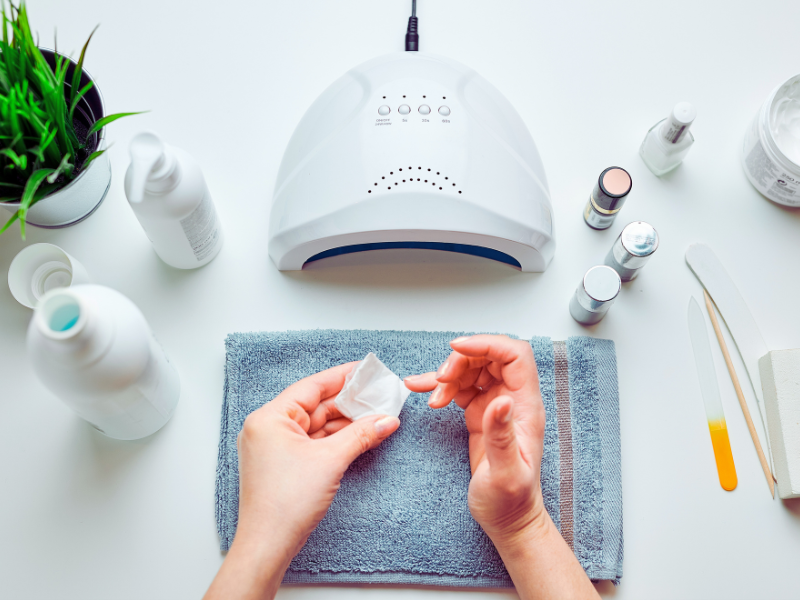
The Foil Wrap Technique
One of the most recommended methods by celebrity nail artists for removing glittery nail polish is the foil wrap technique. Soak a cotton ball in acetone nail polish remover and place it on your nail. Then, wrap your fingertip in a small piece of aluminum foil to secure the cotton ball. This method allows the remover to work directly on the polish without evaporating too quickly.
Letting Your Nails Soak
Patience is key when using the foil wrap technique. Let your nails soak for about 5-10 minutes. The acetone will penetrate the layers of polish, making it easier to wipe away the metallic particles. Avoid the temptation to peek; giving the remover enough time to work is essential for a clean removal.
Gently Scrubbing Away the Polish
After soaking, gently rub the nail with the cotton ball as you remove the foil. You'll notice that the metallic polish comes off much more easily. If there's any excess polish remaining, use a new cotton ball soaked in remover to gently scrub it away. Be careful not to rub too hard, which can damage the nail bed.
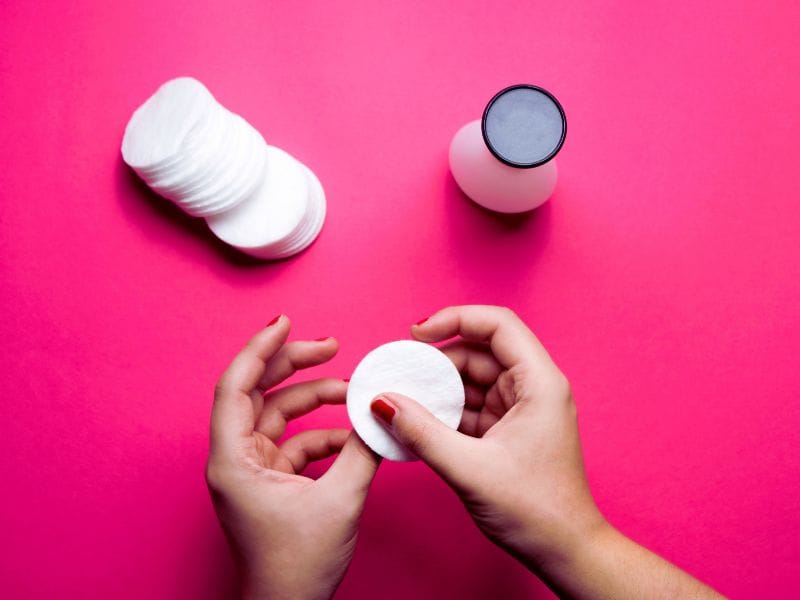
Maximizing Nail Health During Removal
When considering how to remove metallic nail polish, it's crucial to prioritize the health of your nails. Before you start the removal process, take a moment to assess the condition of your nails. If they appear dry or brittle, it's essential to proceed with extra care. Begin by applying cuticle oil around the nail bed, which can help protect your skin from the drying effects of acetone. This small step can make a significant difference in keeping your nails healthy and hydrated throughout the removal process.
In addition to cuticle oil, consider using a nail buffer gently on the surface of your nails before applying any nail polish remover. This can help to remove any excess polish and create a smoother surface, which can reduce the amount of time your nails need to be exposed to harsh chemicals. Remember, the goal is to maintain healthy nails, so be gentle and avoid over-buffing, which can weaken the nail structure. By taking these preparatory steps, you're setting the stage for a more nail-friendly removal experience.
Exploring Non-Acetone Removers for Metallic Nail Polish
When considering how to remove metallic nail polish, it's worth exploring non-acetone removers as a gentler alternative. Non-acetone polish removers typically contain ethyl acetate or isopropyl alcohol, which can be less drying to the nails and cuticles. To use, soak a cotton ball in the non-acetone remover and press it against your nail bed, ensuring that the glittery nail polish comes into contact with the solution. Hold it in place for a few moments to allow the remover to penetrate and dissolve the polish.
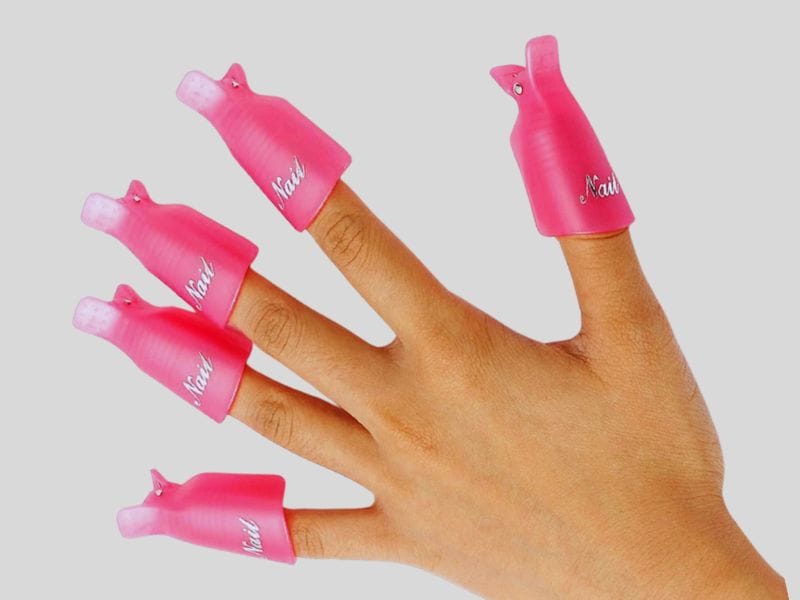
While non-acetone removers may require a bit more patience, they are often favored by those seeking to maintain healthy nails. If you're dealing with stubborn glitter nail polish, you might need to gently rub the nail with the soaked cotton ball multiple times. Remember to be gentle to avoid damaging the nail bed. After successfully removing the polish, it's a good idea to apply cuticle oil to replenish moisture and keep your nails healthy.
The Environmental Approach to Nail Polish Removal
When considering how to remove metallic nail polish, it's essential to think about the environmental impact of the removal process. Traditional nail polish removers often contain chemicals like acetone, which can be harsh on your nails and the environment. Instead, you can opt for eco-friendly alternatives that are less damaging. For instance, there are soy-based removers that effectively dissolve polish without the use of acetone. These removers are not only better for your nails, keeping them healthy, but also for the planet, as they are biodegradable and non-toxic.
Moreover, when removing glitter nail polish or gel polish, instead of using aluminum foil, which is commonly recommended, consider using reusable nail soaks or non-porous materials that can be washed and reused. This small change in your nail care routine can significantly reduce waste. Additionally, for those stubborn bits of glitter, rather than reaching for more cotton balls, try using a nail brush dipped in your eco-friendly remover to gently scrub away the excess polish. This method minimizes the use of disposable items and keeps your nails healthy by avoiding excessive rubbing.
The Science Behind Nail Polish Adhesion and Removal
Understanding the science behind nail polish adhesion can be quite fascinating and can also inform more effective removal techniques. Nail polish adheres to your nails because of how the polymers in the polish interact with the surface of your nail bed. When you're ready to remove gel nail polish or glittery nail polish, knowing that these polymers have formed a strong bond with your nails can help you be more patient and gentle during the removal process. Soaking your nails in warm water before applying any polish remover can help loosen this bond, making the polish easier to remove.
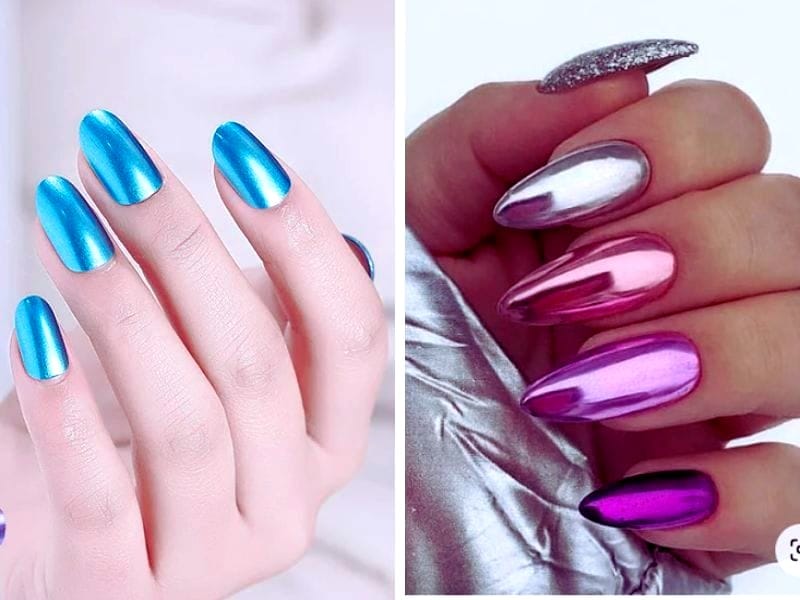
Furthermore, the pH level of your skin and nails can affect how well nail polish adheres and, consequently, how easily it can be removed. Using a slightly alkaline solution like baking soda and water can help neutralize the pH and make the removal process smoother. After soaking your nails, apply a nail acetone remover with a cotton pad and gently push at the polish, starting from the cuticle and moving toward the tip of the nail. This method leverages the science of adhesion to ensure a cleaner and more efficient removal, keeping your nails healthy and ready for the next coat of new polish.
The Role of Mechanical Tools in Nail Polish Removal
In addition to chemical removers, mechanical tools can play a significant role in the removal process of gel nail polish and glittery nail polish. A nail buffer, for instance, can be used to gently buff the nail's surface, breaking down the top coat and making it easier for the nail polish remover to do its job. This is particularly helpful when you want to remove gel nail polish, which is known for its durability and resistance to traditional removal methods.
Another handy tool is the cuticle pusher, which can be used to gently push away any excess polish that has adhered to the skin around the nail. For those who prefer a more hands-on approach, wrapping the fingertip in aluminum foil with an acetone-soaked cotton ball inside can effectively remove glitter nail polish. This method allows the remover to stay in direct contact with the polish, softening it so you can gently peel or rub it away without excessive scrubbing. Remember to wash your hands thoroughly after using these tools to remove any residual remover or polish.
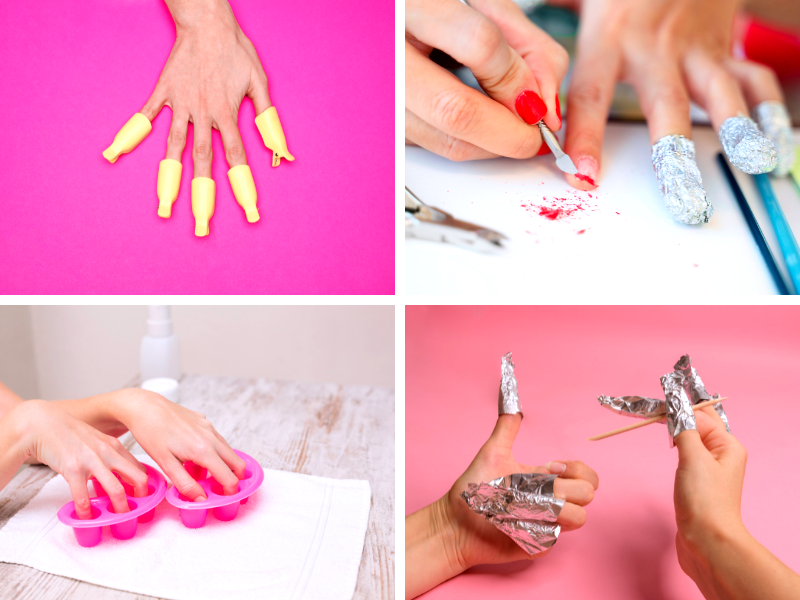
Dealing with Stubborn Glitter Particles
Sometimes, glitter particles can cling to the nails even after soaking. In this case, a nail buffer can be gently used to remove the remaining bits. However, be cautious not to over-buff, as this can weaken the nails. If necessary, repeat the soaking process for a few more minutes to loosen stubborn glitter.
Aftercare for Your Nails
Once the metallic nail polish is removed, it's important to care for your nails. Rinse your hands with warm water to remove any acetone residue. Then, apply a generous amount of cuticle oil to rehydrate the nails and cuticles. Finish by moisturizing your hands with a good hand cream to restore moisture to the skin.
Preparing for New Polish
If you're planning to apply new polish, ensure your nails are completely dry and free of oils. Use a non-acetone nail polish remover to wipe down the nails, creating a clean surface for the new polish to adhere to. Apply a base coat to protect the nails and help the color last longer.

Summary
Removing metallic nail polish requires the right technique and a bit of patience. Following the steps outlined in this guide, you can effectively remove even the most stubborn glittery nail polish while keeping your nails healthy. Remember to prepare your nails, choose an effective remover, use the foil wrap technique, and provide aftercare to maintain nail health. With these tips, you'll be ready to sport a fresh, new polish in no time.
FAQ Section
Can I remove metallic nail polish without using acetone?
Yes, you can use non-acetone removers, but they may not be as effective on metallic or glitter polishes. For a natural alternative, you can try soaking your nails in a mixture of warm water, dish soap, and a few drops of rubbing alcohol.
How can I prevent my nails from drying out after using acetone?
After using acetone, rinse your hands with warm water and apply cuticle oil to your nails and cuticles. Follow up with a moisturizing hand cream to replenish lost moisture.
Is it safe to peel off metallic nail polish instead of using a remover?
Peeling off nail polish can damage the top layer of your nail bed. It's best to use a proper removal method to keep your nails healthy. If you prefer peeling, use a peel-off base coat designed for that purpose.
